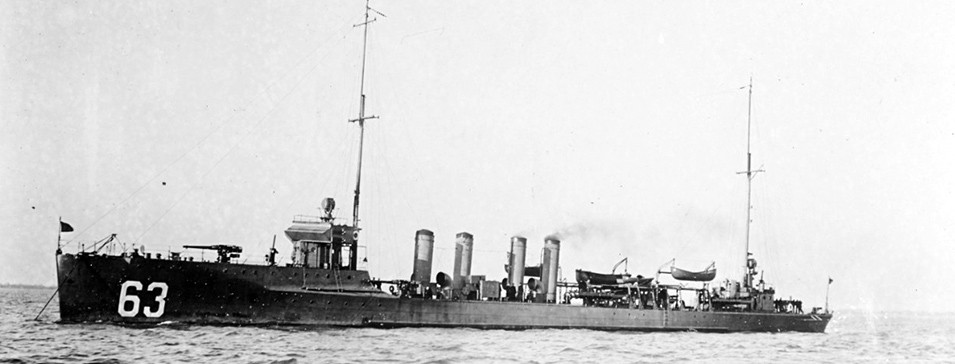Overview
Hello again! Today I suggest a WW1-era destroyer in the game, entering service a year before the US’s entrance into WW1, the Sampson-Class Destroyer, USS Sampson, DD-63).
Basic Information
Designation: DD-63
Name: “Sampson”
Namesake: Admiral William T. Sampson, veteran of the American Civil War and Spanish American War,
Class: Sampson-Class
Role: Destroyer
Crew: 102
-
6 Officers
-
96 Enlisted
Shipbuilder: Fore River Shipbuilding Company
Laid Down: April 21, 1915
Launched: March 4, 1916
Commissioned: June 27, 1916
Decommissioned: June 15, 1921
Stricken: January 7, 1936
Fate: Scrapped, June 1936
Specifications
Dimensions:
-
Length: 315 ft 3 in (96.09 m)
-
Beam: 30 ft 7 in (9.32 m)
-
Draft: 10 ft 9 in (3.28 m)
-
Displacement: 1,111 Tons
Sailing Preformance:
-
Engine(s): 4x Boilers, 2x Curtis Turbines, 17,696 hp (13,196 kW)
-
Propellor(s): 2x Screws
-
Max Speed: 29.5 kn (54.6 km/h)
Armament:
-
Main Gun(s): 4x 4 in (102 mm)/50 caliber guns
-
Torpedoes: 4x triple-mount 21 in (533 mm) torpedo tubes
-
Anti-Air Guns: 2x QF Mk.II 1-pounder (37 mm) AA guns
-
Depth Charges: 1x aft track, 1x Y-Gun
Usage in Battles
The USS Sampson would make a fairly decent low rank or reserve vehicle, having a good armament of 4-in guns and broadside torpedoes, making it quite formidable in engagements. Another notable mention is that it has Anti-Air guns, 2 37mm QF-1 pounders, while having a slower fire-rate, pack quite a punch. It’d be quite slow, moving noticably slower than the USS Litchfield, but it would make up for it with its comparable survivability with spread out modules.
Pros:
-
Decent turret traverse and firing arcs
-
Decent Torpedo Broadsides
Cons:
-
No Armor
-
Low shell velocity
-
Poor against uptiers
History
The USS Sampson was laid down on April 21, 1915 by the Fore River Shipbuilding Company in Quincy, Massachusetts, launched on March 4, 1916, her construction sponsored by Miss Marjorie Sampson Smith, and was commissioned at the Boston Navy Yard in Boston, Massachusetts, on June 27, 1916.
The Sampson was assigned to Division 9 of the Atlantic Destroyer Force and conducted shakedown training at Narragansett Bay in Rhode Island. When the United States entered World War I on 6 April 1917, she was commanded by Lieutenant Commander Mark L. Hersey, Jr., receiving the Navy Cross for distinguished service while commanding the Sampson and would rise to the rank of commodore during World War II.
After her war game training off Provincetown, Massachusetts, on May 15, 1917, the Sampson joined the escort screen of a convoy at Halifax, Nova Scotia, Canada, and reached Queenstown (now Cobh), Ireland, on May 25, 1917. She reported for duty with the United States Naval Forces operating in European waters and was assigned to escort duty in the British Isles on May 29, 1917, protecting troop transports and merchant ships from Imperial German Navy submarines throughout World War I.
On June 18, 1917, the Sampson rescued two small boatloads of survivors from the British steamer English Monarch and the captain and 13 sailors from the steamer Elele. The next morning, she picked up another 17 survivors of Elele, returning all the survivors back to Queenstown on June 20, 1917. Sampson continued to answer various distress calls before the end of the war, and she made several attacks to drive off submarines reported or seen near her convoys, serving till the end of World War 1.
Post-War, Sampson steamed off to France with the Queenstown division of destroyers on November 29, 1918 and anchored outside Brest Harbor, France on December 12, 1918 to escort President Woodrow Wilson aboard the oceanliner George Washington into the harbor. Returning to Queenstown on December 14, 1918. She departed from France back to the United States on the December 26, 1918 and arrived at the New York Navy Yard in Brooklyn, New York, on January 7, 1919.
Repaired at the New York Navy Yard, Sampson was assigned to the 4th Division, 2d Flotilla, of the Destroyer Force and departed on March 22, 1919 to base operations from the Naval Torpedo Station at Newport, Rhode Island. She served for experimental testing of torpedoes and naval mines, but she was reassigned in May 1919 to assist in guarding the route of NC-4, the seaplane that would preform the world’s first successful trans-oceanic flight.
Sampson entered the New York Navy Yard on December 1, 1919 for deactivation overhaul which was completed on 14 February 1921, afterward being towed to the Philadelphia Navy Yard in Philadelphia, Pennsylvania, Sampson was decommissioned on June 15, 1921. She remained inactive, and on July 17, 1935, The Sampson was ordered to be scrapped in accordance with the London Naval Treaty. Her name was struck from the Navy list on January 7, 1936, and on September 8, 1936, she was sold for scrap for to the Boston Iron and Metal Company, Inc., of Baltimore, Maryland.
Source
Sampson-class destroyer - Wikipedia
USS Sampson (DD-63) - Wikipedia
https://destroyerhistory.org/early/sampsonclass/
USS Sampson (Destroyer #63, later DD-63)
- Yes
- No
